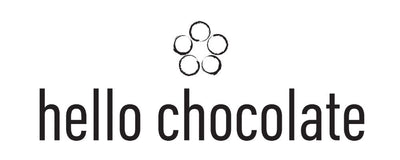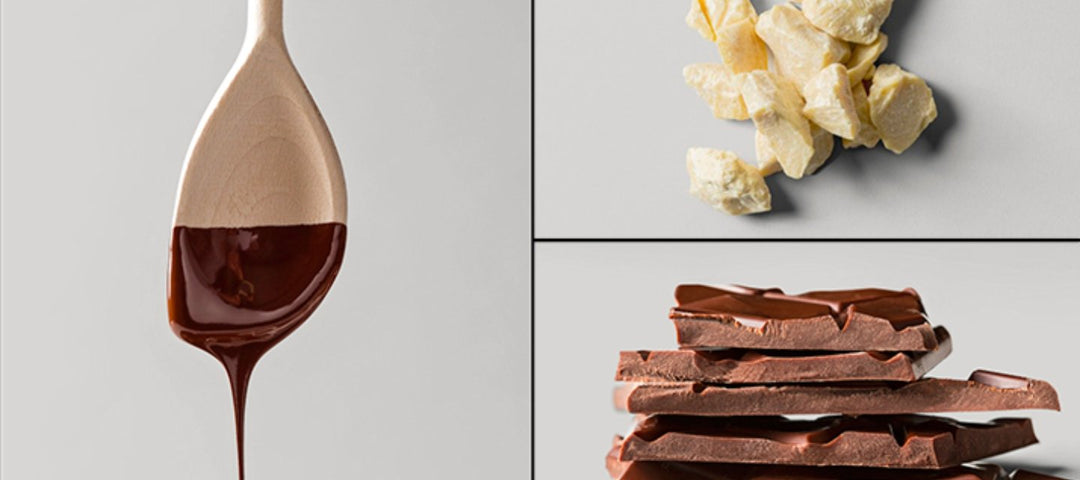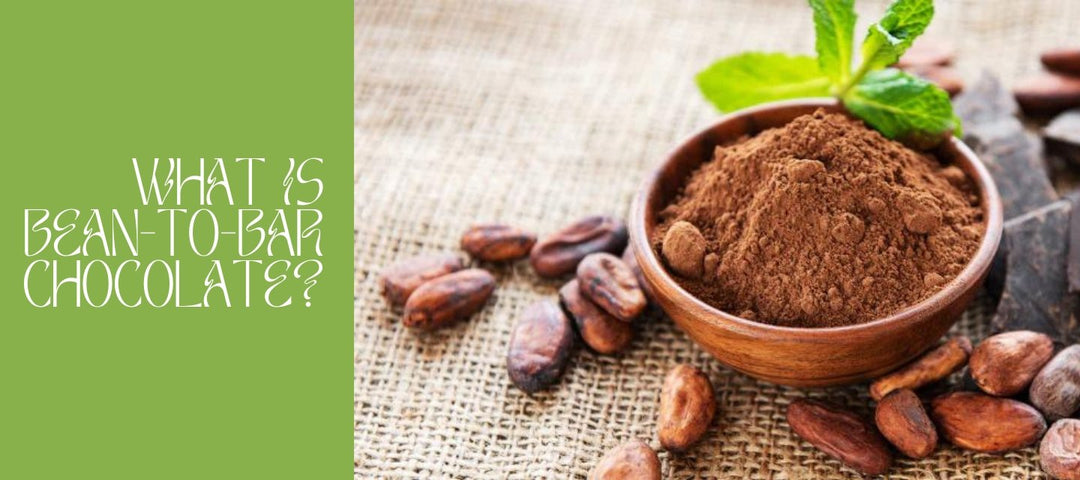Journal
What is Bean-to-bar Chocolate?
Bean-to-bar chocolate is chocolate without crap in it
For a long time, we were trying to find a short and simple definition of craft bean-to-bar chocolate that could serve as a conversation opener. And this one, probably, it. But, of course, there's more. To craft bean-to-bar chocolate, you first start with organic cacao beans of some sort - in other words, the beans are farmed organically. Then, once the beans are harvested, fermented and dried and you start the chocolate-making process, you don't add anything foreign or remove anything from the chocolate. This is bean-to-bar chocolate. Oh, there is a little thing we should mention: sometimes soy or sunflower lecithin derivative may be added, as a smoothening ingredient, and in a minimal amount. The ideal, however, is there is none.
Almost everyone is shocked when they find out that not all chocolate is natural like bean-to-bar chocolate and not all chocolate is made from one simple ingredient, cacao beans. Quite the contrary. It's astounding that there're about a hundred official, perfectly legal, completely unnecessary, possible additives. And additives aren't only for supermarket chocolate. Even some of the high-priced, "Belgian" chocolates will have at least ten. But bean-to-bar chocolate is so different. It may still be a microscopic speck in the global chocolate scene, but its' popularity is growing. Like the Little Engine That Could, this tiny bean-to-bar chocolate movement, and Hello Chocolate is a part of it, is slowly pulling the rest of the chocolate world up the mountain. Its' influence is outperforming its' size.
Our Bean-to-bar Chocolate Tasting Rules
-
Taste. Taste. Taste. It's the only way to learn.
-
There's a lot to be learned from a great bar of chocolate. But there's even more to learn from one you didn't like.
-
Be open, be curious and let your enthusiasm show. If the people selling you bean-to-bar chocolate are still snobby, they're in the wrong business.
-
Always check our customer reviews and/or leave your own. Share with others what you are excited about, You also get the best recommendation this way.
-
Bean-to-bar chocolate is more expensive than mass-market "chocolate" because it is made of premium materials. But just because a bar is expensive doesn't mean it is good. But most of our chocolate brands go through a rigorous selection process. So Hello Chocolate does this part for you.
-
If you don't like the bar you've opened at first, taste it again every thirty minutes or so to see how your perception evolved. Or even try again the next day.
-
Don't wait for something special to open a special bar of chocolate.
-
A great chocolate maker is more important than the origin of cacao beans.
-
Chocolate's number one job is to make us "casually" happy.
-
In the end, there are no rules when it comes to bean-to-bar chocolate.
The Yellow & The Blue

Dear Friends,
When we started Hello Chocolate in 2015, one of our founding principles was that this business is not supposed to be about us. It’s about chocolate. We have no interest in building a cult of personality or farming social media likes and followers. We believe that our role is behind the scenes as stewards and curators—our job is to support talented independent chocolate makers and to introduce them to a larger family of chocolate lovers around the globe. In this way, it seemed irrelevant who we are or where we’re from.
Our perspective on this has evolved since we were forced to flee Kyiv, Ukraine last week. Our family has witnessed Russia’s invasion first-hand. Sadly, our daughter (along with millions of our country’s children) has been through things that no child should ever have to experience.
Shortly after the first artillery shells were fired, though, many of you reached out with heartwarming generosity and concern for our family. You made it clear that, though Hello Chocolate may be what brought us together, you care about us as people. Just as we were seeing the worst of humankind, your messages of kindness have been renewing our faith in humanity. We will be forever grateful for this outpouring of love and hope.
I’m happy to provide a brief update that Nina and our daughter Varya, together with Nina’s mother, left Ukraine early last Saturday. After a bit of a journey, they are now staying with our dear friends at Beau Cacao. It was a difficult decision to part, but in the end, we agreed that there are worse fates than being a refugee at your favorite chocolate shop in the French Alps.
I am currently in Odessa where I have been splitting my time helping our local defensive units prepare and working with Hello Chocolate’s operational teams in Singapore and the US. I had been away from Ukraine for enough years that I had forgotten how epically stoic our citizens can be. I am now immersed in this daily and, while I aspire to it, I am also reminded that “Just because they carry it well doesn't mean it isn't heavy.”
As for Hello Chocolate, our operations teams have been doing a fantastic job keeping the machine running. While so many in Ukraine have had to leave their jobs and livelihoods behind, we feel incredibly fortunate for our own situation. Starting yesterday, we have committed to providing a quarter of our future proceeds, to the support of other displaced Ukrainian families, mostly through the continuity of the food supply chain here in Odessa. Because this is what we know and what we’re passionate about. I personally work directly with the professional veterans of the volunteer movement here in Ukraine. This guarantees that all help will reach their recipients as fast as it can only be possible.
While I think some of our most difficult days are ahead of us, I also believe we will see peace soon. I know the odds. I’m reminded of them everyday. But I have to believe this will end, just as I have to believe I will see my family again. In the meantime, from the bottom of my heart, I thank you for your continued kind words, thoughts, and deeds. Slava Ukraini!
Dima Minkov, Hello Chocolate.
Why Our Chocolate Costs What it Costs
We used to the fact that mass-produced chocolate shouts how cheap it is and luxury chocolate prefer to keep silence why it is so expensive. But what about true cost of real chocolate that deserves to be called so?
At Hello Chocolate, however, we love to brake the rules, especially silent ones. We will tell you everything about why our chocolate costs what it costs. When we fist decided to start working with ethically-produced craft chocolate from around the world, we decided to follow three basic principles:
- We will always work with the best chocolate we can find which means: no chocolate made from industrial cacao mass supplied by big corporations where you can't trace the source or how it was produced (they usually skip the fermentation process and remove the flavour of cacao to make it predictably bitter); no such nonsense like “compound” chocolate, which simply means less cacao and more palm oil; no ingredients you can’t pronounce.
- We will always charge the price that will reflect fair value of the products, including enough profit for cacao growers, suppliers and chocolate makers, even if we go way above the price on shelves.
- We will avoid pricing chocolate as “luxury” or unnecessarily high and will protect our customers from makers that use this practice.
In truth, these principles are inextricably bound. But, while practically every business claims to subscribe to Principle 1, most of them are quicker to compromise on quality than they are to raise a price. We've learned that better food in general, and chocolate in particular, usually costs more money. (The inverse is not the case: more expensive chocolate doesn't necessarily taste better).
So we've chosen to price higher rather than compromise on the quality of our chocolate. Over the years we're proud that make a statement that we helped dozens of businesses to source better-tasting ingredients:
- better beans
- better sugar
- better milk powder
- better inclusions
- better... you get the idea.
Better ingredients really do make better chocolate. At the same time, we've tried to remember that while raising prices is a difficult thing to do, much of the industry operates under an unwritten guiding principle that "the customer can't tell the difference." If cacao prices go up, buy less expensive beans - "no one will notice." If high-quality milk powder is difficult to source, buy from convenient wholesalers of modified stuff -"who can tell?" Sorry guys, but as far as we are concerned, customers can and do tell the difference.
When we price a chocolate bar (or anything else we sell) for our online store, we do it according to algebraic formulas, not whim. We price according to widely-used formulas, that allow us to pay our creditors, pay our bills, payrolls, ourselves (yes, it's true) and stay in business to keep selling the best possible chocolate to our customers and members.
Most people find it hard to believe, but the reality of financial life is that the margins on our chocolate are 50-100% lower than the industry standards. Hardly anyone believes that, but it's the truth. If you run the study on the Hello Chocolate's costs you will be flabbergasted at how much more our chocolate costs compared to mass-market chocolate candies that flooded the shelves of conventional retail (online retail as well). Knowing the economy of chocolate-making, we have only one question. How can real chocolate be sold for less? Simple, really: less cacao, more palm oil, more artificial flavourants and preservatives, more sugar, more kids labour, less payments to farmers, skipping fermentation, more greed, less dedication and passion.
Now you really CAN taste the difference!


